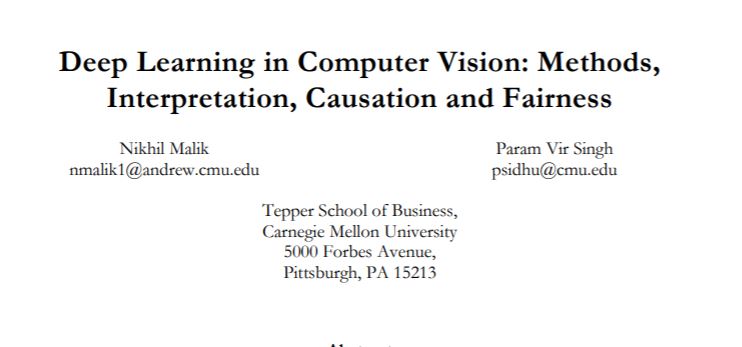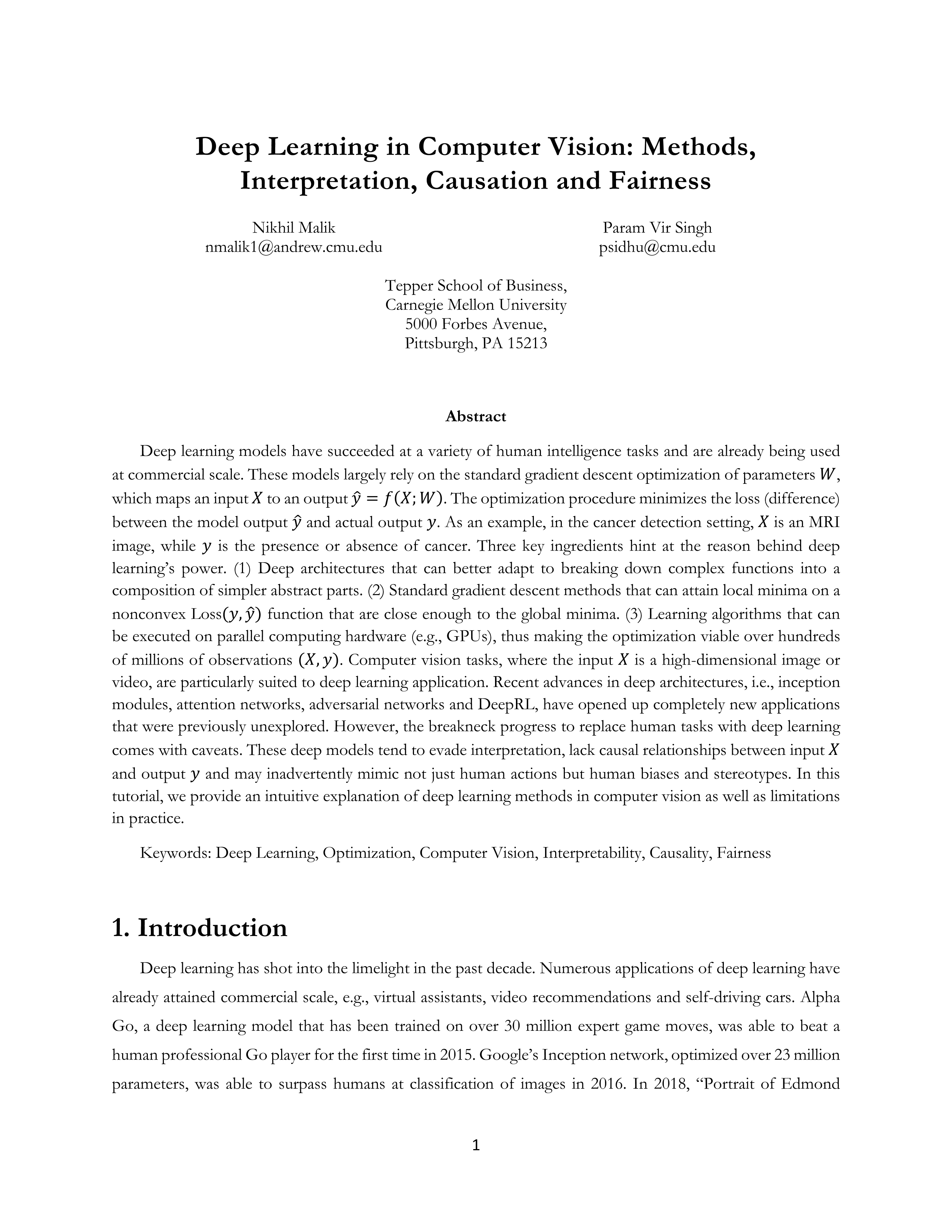Deep Learning in Computer Vision: Methods, Interpretation, Causation, and Fairness Deep learning models have succeeded at a variety of human intelligence tasks and are already being used at commercial scale. These models largely rely on standard gradient descent optimization of function parameterized by , which maps an input to an output . The optimization procedure minimizes the loss (difference) between the model output and actual output . As an example, in the cancer detection setting, is an MRI image, and is the presence or absence of cancer. Three key ingredients hint at the reason behind deep learning’s power: (1) deep architectures that are adept at breaking down complex functions into a composition of simpler abstract parts; (2) standard gradient descent methods that can attain local minima on a nonconvex Loss function that are close enough to the global minima; and (3) learning algorithms that can be executed on parallel computing hardware (e.g., graphics processing units), thus making the optimization viable over hundreds of millions of observations . Computer vision tasks, where the input is a high-dimensional image or video, are particularly suited to deep learning application. Recent advances in deep architectures (i.e., inception modules, attention networks, adversarial networks and DeepRL) have opened up completely new applications that were previously unexplored. However, the breakneck progress to replace human tasks with deep learning comes with caveats. These deep models tend to evade interpretation, lack causal relationships between input and output , and may inadvertently mimic not just human actions but also human biases and stereotypes. In this tutorial, we provide an intuitive explanation of deep learning methods in computer vision as well as limitations in practice.





